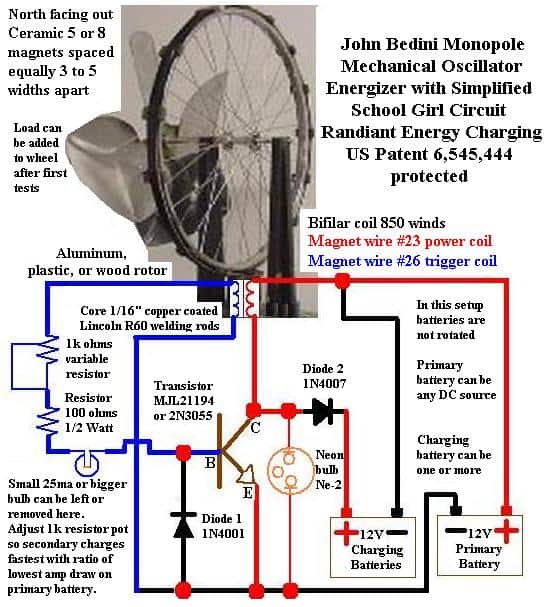In this post I have explained how to recharge and use bad, defective discarded batteries using an innovative battery charging process invented by John Bedini.
Lead acid batteries can sometimes be a problem to get rid of. They can also be high priced to upgrade. In case discarded in the wrong way, they have a tendency to finish up in the land fill up or even rotting of in your junkyard.
Contribution of John Bedini
John Bedini has presented a bequest to the world which can bring back and enrich the used, abandoned, sulfated batteries.
In case your battery is sulfated from typical utilization, it may commonly be recovered using this discovery.
Batteries which have material impairment or have warped plates are worthless. The Bedini SSG (Simplified School Girl) generator can separate the sulfation on the battery plates and energize the batteries. On many occasions, the battery will in fact acquire further voltage, workable power compared to the time it had been purchased.
By means of routine utilization, a battery would probably gradually drop its potential to hold electricity. This can be witnessed by the necessity to charge the battery far sooner every time. Typical battery chargers often give rise to this consequence due to heating effect of the battery.
Because the plates get hot by way of charging, these are steadily weakened. A battery may have less electrical power every time it is utilized.
With the Bedini charger, that is not the situation. I have reconditioned batteries which were found resting around in a trash.
A couple of such batteries that possessed a charge of below 2 volts each presently are running my electric boat generator.
These types of batteries were not consuming a charge with regular chargers. After a while and many rounds with the Bedini charger, the batteries have become superior to brand new.
How Bedini SSG Function
This electric motor would not self start. You need to provide it with a little bit force to pick it up going, however once it begins rotating it is going to turn up by itself and self adjust its very own acceleration and speed depending on the dimensions and charge condition of the batteries getting charged.
Since a magnet moves down the coil, a tiny electric current is stimulated into the main coil.
This activates the transistor to switch on, enabling electricity from the operated battery to stream by way of the supplementary coil.
The magnetic field generated in the secondary coil provides the cycle a tiny lift up on its path past the coil.
As the magnetic field sets off the coil, the transistor is turned back off. This leads to the magnetic field in the supplementary coil to drop (back emf).
During this period, the vibrant electric power makes its way into the process which is emptied via a diode into the batteries to be charged.
This method could be demonstrated to generate additional energy on the recharging aspect compared to the need to steer the motor. In the method presented, the input current amounts between 150-200 mA.

